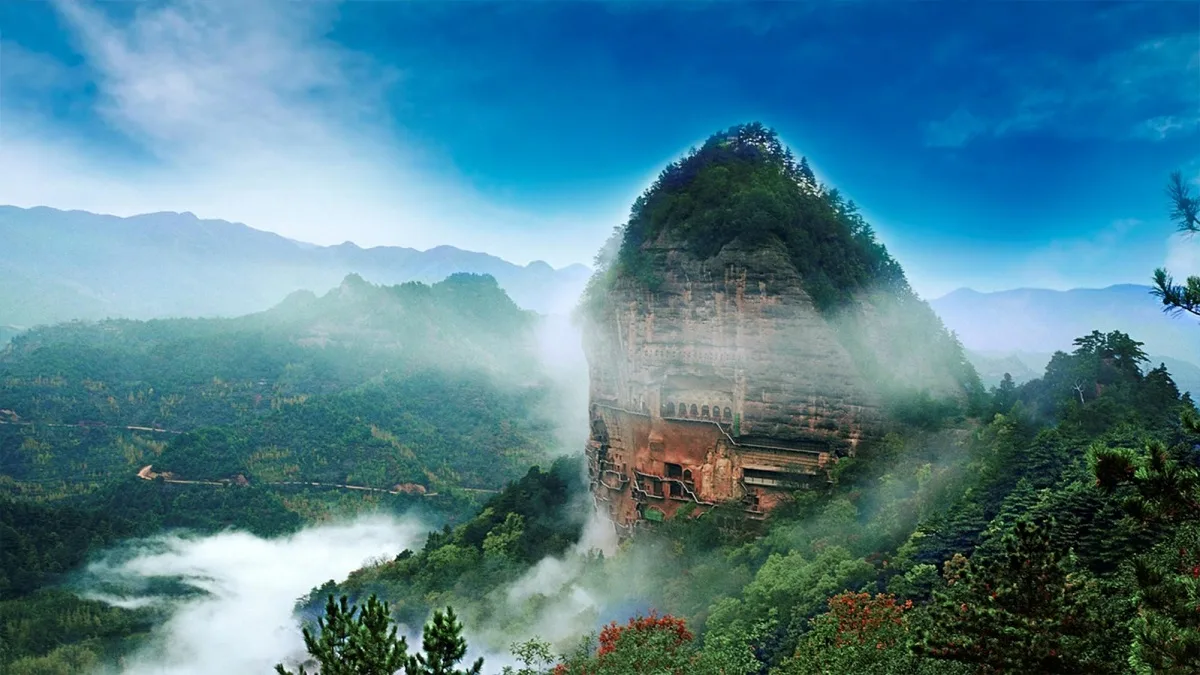Maiji Mountain Scenic Area (麦积山风景名胜区) covers an area of 215 square kilometers, situated at the eastern end of the northern branch of the West Qinling Mountains. It intersects with the Qinling, Helan, and Min Mountains, serving as a watershed between the Yangtze and Yellow River basins. The scenic area features five sub-areas: Maiji Mountain Grottoes, Xianren Cliff (Immortals Cliff), Shimen (Stone Gate), Quxi (Curved Stream), and Jieting Hot Springs, comprising over 180 scenic spots.
Maiji Mountain Grottoes, established in the early 5th century, are renowned for their clay and stone-based sculptures, representing the most intact collection of Northern Wei statuary in China. They are also the sole remaining examples of cliff-side pavilion architecture from the Northern Wei Dynasty, earning the title of “Eastern Sculpture Art Exhibition Hall” and ranking among China’s “Four Great Grottoes.”
Visitors to Maiji Mountain Scenic Area can explore not only its cultural and historical significance but also its picturesque natural surroundings, such as the red cliffs, tranquil valley streams, rugged white pine peaks, and dense forests veiled in mist.
Table of Contents
- Basic Information
- Location and Transportation
- Highlights of Maiji Mountain
- Vlog about Maiji Mountain
- Other Attractions in Tianshui Suburbs
Basic Information
| Estimated Length of Tour | 1 day |
| Ticket Price | Admission: 25 RMB Maijishan Grottoes: 80 RMB Xianren Cliff: 40 RMB Stone Gate: 40 RMB Sight-Seeing Bus: 15 RMB for round trip; 8 RMB for single trip |
| Opening Hours | 8.00 – 18.00 (1st April – 30th October) 8.00 – 17.00 (1st November – 31st March) |
| Telephone Number | 0086-0938-2731407 0086-0938-2655292 |
Location and Transportation
Maiji Mountain is located in Maiji Town, Maiji District, Tianshui City, Gansu Province, China. The mountain lies at the geographical intersection of two major river systems in China – the Yangtze River and the Yellow River basins. To get there, you can choose one of the following ways:
- From Tianshui Railway Station:
- Take Bus No. 34 directly to Maijishan Scenic Area.
- From Tianshui South Railway Station (High-Speed Railway Station):
- Take Bus No. 60 directly to Maijishan Scenic Area (Note: Bus No. 60 is seasonal and may not operate during the off-season).
- Alternatively, take Buses No. 1, 9, 35, or 58 to Tianshui Railway Station and transfer to Bus No. 34 to reach the scenic area.
- From Tianshui Airport:
- Take Bus No. 5 or 60 to Maijishan Scenic Area (Note: Bus No. 60 is seasonal).
- Alternatively, take Buses No. 1, 9, 35, or 58 to Tianshui Railway Station and transfer to Bus No. 34 to reach the scenic area.
- From Tianshui City Center:
- Take Bus No. 5 directly to Maijishan Scenic Area.
- Alternatively, take Buses No. 1 or 9 to Tianshui South Railway Station or Tianshui Railway Station and transfer to Buses No. 60 or 34 to reach the scenic area.
Highlights of Maiji Mountain
Maiji Mountain Grottoes
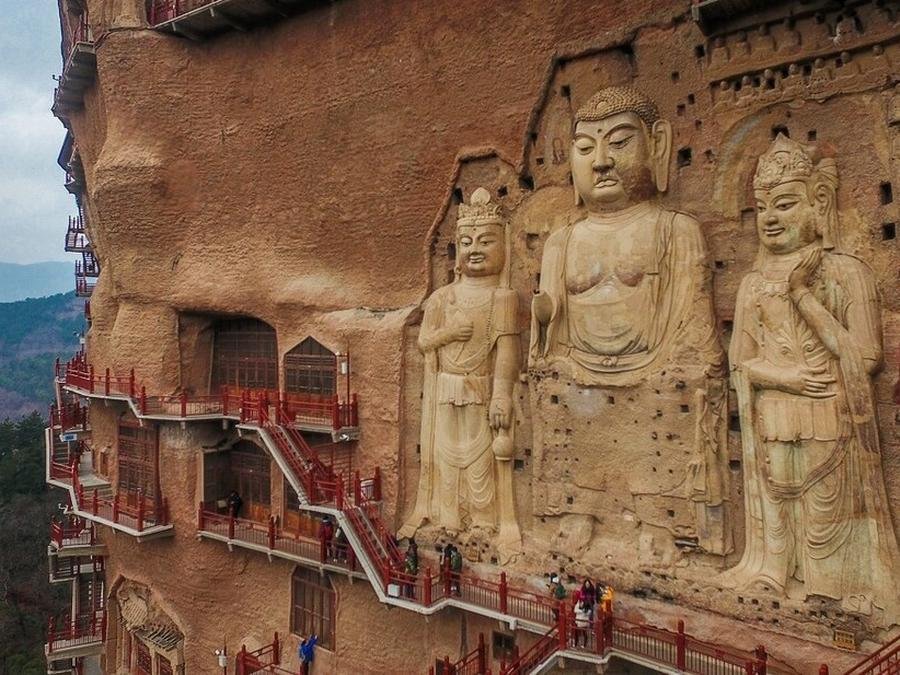
The Maiji Mountain Grottoes, the most prominent feature of the scenic area, are a marvel of ancient Buddhist art and architecture. The name “Maiji” translates to “Wheat Stack Mountain,” inspired by the mountain’s steep, stack-like appearance. Standing 142 meters high, the mountain is topped with a Sui Dynasty pagoda surrounded by ancient white pines.
The grottoes, carved into the cliffside over the past 1,600 years, consist of 209 caves housing 7,866 clay sculptures and stone carvings, as well as over 1,300 square meters of murals. These grottoes are one of China’s Four Great Grottoes and are celebrated as the “Eastern Sculpture Art Exhibition Hall.” The grottoes display a rich array of Buddhist sculptures and murals from the Northern Wei to Tang Dynasties, showcasing intricate art and religious iconography. The cliffs, the suspended walkways, and the surrounding natural beauty of evergreen pines and red cliffs offer a spectacular visual experience.
Xianren Cliff
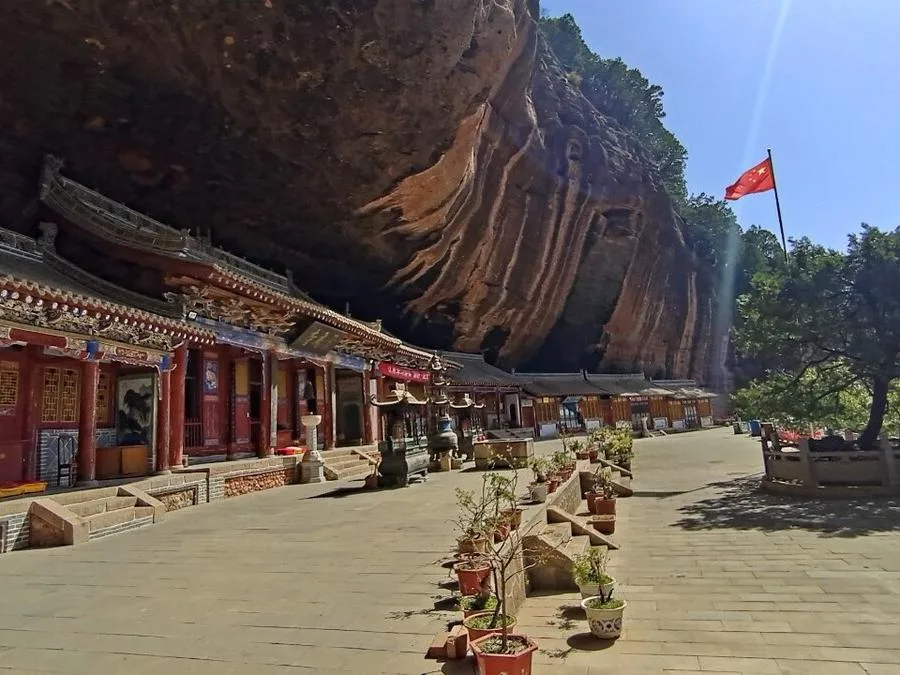
Approximately 15 kilometers from the Maiji Mountain Grottoes, Xianren Cliff (Immortal Cliff) is another significant attraction. This area is characterized by its three main cliffs, five peaks, and six temples. The three cliffs are named East Cliff, West Peak, and South Cliff. The five peaks include Yuhuang Peak, Baogai Peak, Xianzhu Peak, Dongya Peak, and Xiya Peak. The six temples are Mulan Temple, Shilian Temple, Tielian Temple, Hualian Temple, Shuilian Temple, and Lingying Temple.
Xianren Cliff is historically significant for its Buddhist and Taoist temples built since the Northern Wei Dynasty. During the Song Dynasty, the site was known as Huayan Temple, and later, during the Ming Dynasty, it was renamed Lingying Temple by the Yongle Emperor. After the fall of the Ming Dynasty, the site became a retreat for Ming descendants and scholars.
Today, Xianren Cliff boasts 27 Ming and Qing Dynasty temples, 197 statues from the Northern Wei, Song, Ming, and Qing Dynasties, and 83 square meters of murals. Among its treasures are five precious copper Buddha statues from the Yongle period. The cliff’s rich collection of Ming and Qing Dynasty clay sculptures offers valuable insights into the evolution of Buddhist art and sculpture.
Stone Gate
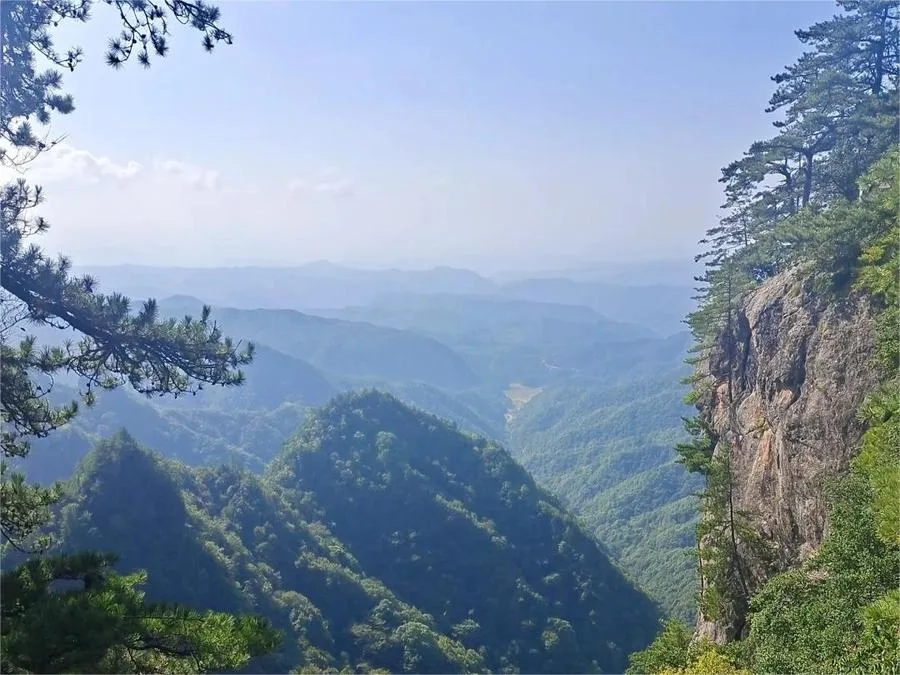
Stone Gate, situated 25 kilometers southeast of the Maiji Mountain Grottoes, is a stunning granite peak landscape often referred to as “Little Huangshan” due to its majestic formations. This area features five prominent peaks: Huangtian Peak, Yuling Peak, Doumu Peak, Xinglong Peak, and Qilin Peak. Among these, Huangtian Peak stands as the highest at 2,097 meters above sea level.
The central feature of Shimen is the Quxian Bridge that connects two of the main peaks. This bridge spans a deep chasm and offers breathtaking views of the surrounding landscape. The bridge and the black stone circle beneath it resemble a grand gateway, giving rise to the name “Stone Gate.” One of the most spectacular experiences at Shimen is the “Stone Gate Night Moon” phenomenon. During the Mid-Autumn Festival, the full moon rises between Huangtian Peak and Doumu Peak, appearing to hang directly over the Quxian Bridge. This awe-inspiring view is a highlight for visitors and photographers alike.
Stone Gate is also known for its Taoist temples. The area is home to over ten ancient Taoist and Buddhist temples, including the Zushi Temple, Holy Mother Temple, and Queen Mother Temple. These temples follow a unique Taiji Bagua (Yin-Yang) design and form an “S”-shaped pattern on the landscape. This intricate layout is rare among Taoist architectural sites and provides a glimpse into the spiritual and historical significance of the region.
Curved Stream

Curved Stream is a captivating natural feature located along a 12-kilometer stretch of the Bai Jia River’s Xujiacun to Guanyin Temple section. The stream is renowned for its winding path, which creates a series of scenic bends and turns. The most dramatic section of Quxi is the stretch from Wangjiazhuang to Xiamachang, where the meandering river forms a 3.5-kilometer long curve with a very narrow neck of only 300 meters.
Quxi’s landscape is characterized by nine twisting turns, charming bridges, flowing water, and lush greenery. This picturesque scenery can be compared to the Nine-Bend Stream in Wuyi Mountain in Fujian and the Jiuzhaigou Valley in Sichuan. The serene environment and the unique natural features make Quxi a perfect spot for leisurely walks and nature photography.
Jieting Hot Springs
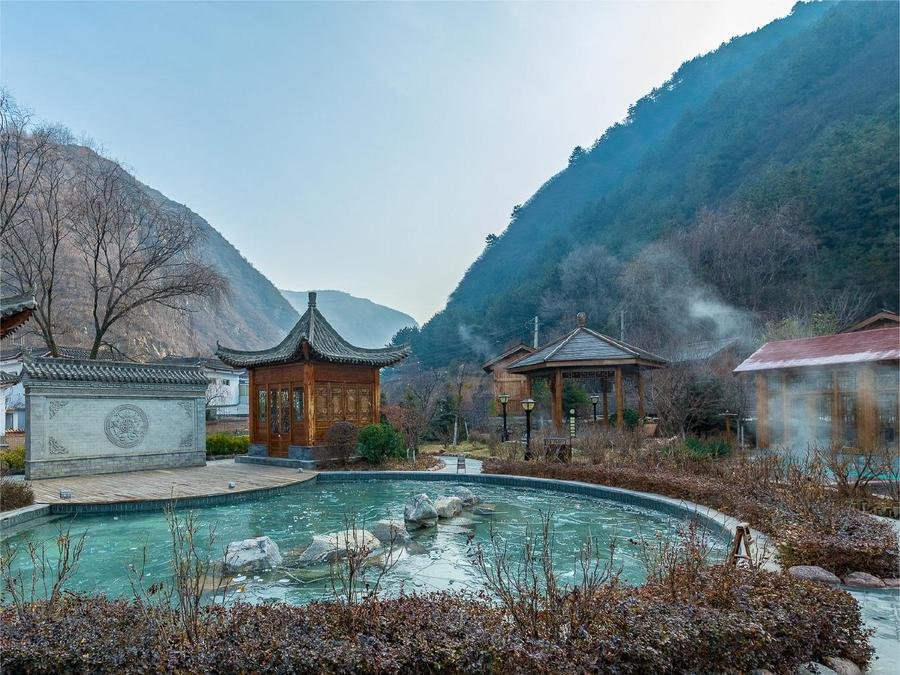
Located in Jieting Ancient Town, where the Shimen and Xianren Cliff scenic areas converge, Jieting Hot Springs offers a relaxing retreat for visitors. Jieting Ancient Town is historically significant as the residence of the famous Tang Dynasty poet Du Fu in 759 AD.
The hot springs in Wenjia Gorge have a water temperature of around 40°C and are rich in 19 types of trace elements. These mineral-rich waters are believed to have therapeutic effects on various ailments such as nervous disorders, insomnia, high blood pressure, heart disease, stroke sequelae, arthritis, skin diseases, and athlete’s foot.

